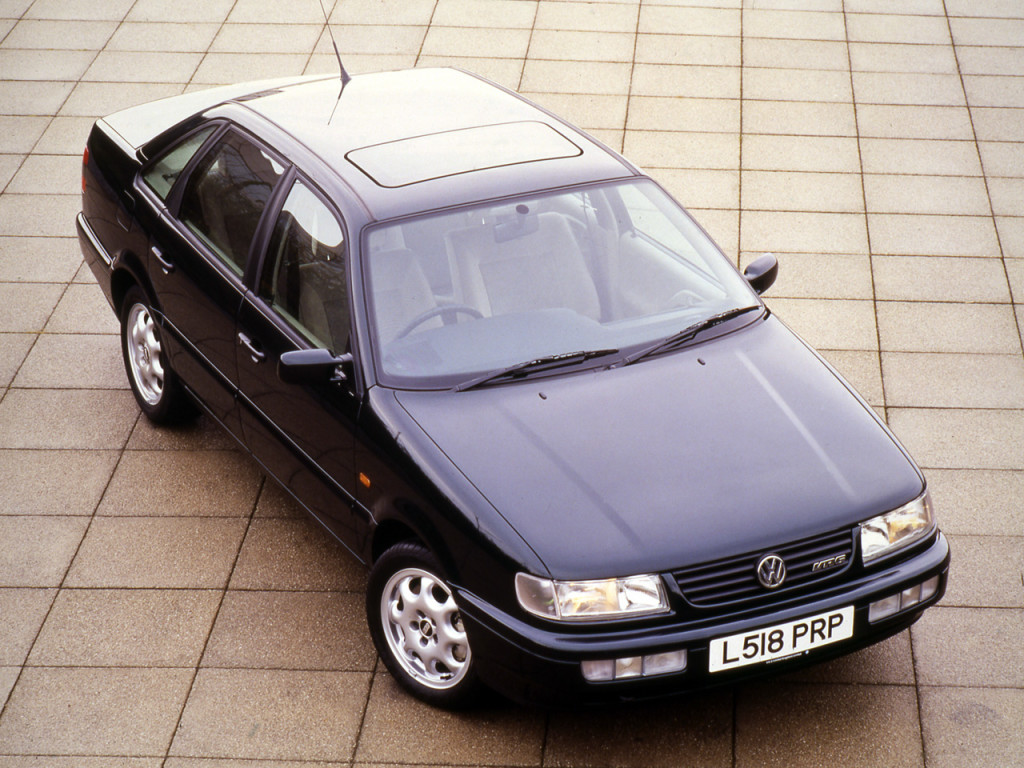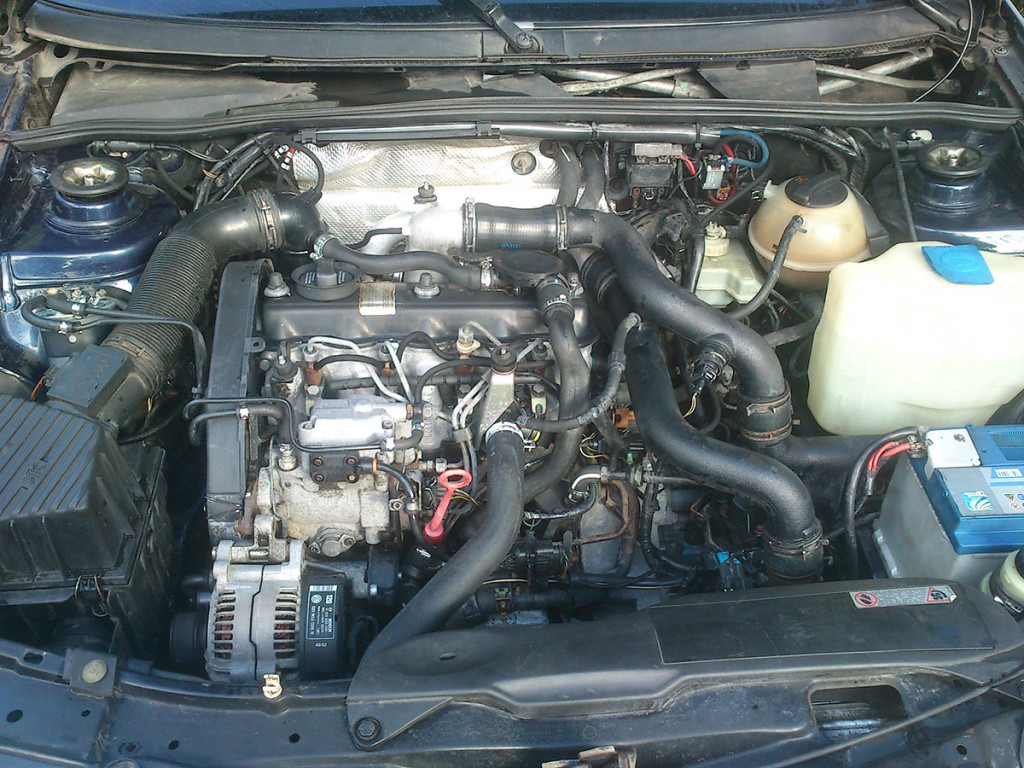The German automobile concern has been producing the Passat line since 1988. But if we are talking about the B4 model, then you should understand that it rolled off the assembly line from 1994 to 1996 inclusive. This model has spread widely in Russia, especially in the used car market. The phenomenon is due to several reasons:
- The perfect combination of modern look and reliability.
- The model has a traditional set of advantages of the Passat line.
- This is a reliable and well-knit German station wagon with a range of quality engines.
- Large interior and trunk space.
- Relatively inexpensive repair.
All these advantages confirm once again that the car is one of the best among the representatives of the "family" class .
The attraction of the history of the Volkswagen B4 was the controversial design of the “front end”, changed to the usual one, with a radiator grille. This design was used once in a wide generation of concern machines. The list of additions has been somewhat expanded. In produced variations, 2 frontal airbags and seat belt pretensioners and an ABS system were mounted.
Volkswagen Passat B4 was available not only as a sedan, but also in the station wagon class. It was sold with a TDI turbodiesel. This variation remains desirable in the US market to this day. It is characterized by high cost, which is due to the savings in gasoline and the possibility of refueling with locally produced biofuels. But now it is less and less possible to meet the Volkswagen Passat B4 TDI station wagon on the US market for the reason that only about 1000 vehicles were imported.
The range of cars was famous in the UK in 1988.
Customers were provided with cars with gasoline engines with a working volume of 1.8 liters (1781 cm³) and 2.0 liters. (1984 cm³), with bodies like four doors "sedan" and "station wagon" five doors. The new production of cars has a perpendicularly located engine in the engine compartment, and in the cars of the previous generation it is in a longitudinal position
. Due to such technologies in the new Passat B4 models, the interior is much larger than in the previous ones. Most of the engines in the presented models were four-cylinder, with the camshaft located on top. In the engine compartment, they were perpendicular. This arrangement greatly contributes to facilitated repairs.


Four-cylinder petrol engines
In practice, the engines installed in the station wagon are unpretentious and durable. With proper maintenance, they can last in the range from 300 thousand to 350 thousand km. During operation, it is recommended to adhere to one rule: if the motor is acting up, it is better to contact a service center than to carry out repairs yourself. What is it connected with? Unlike other structural elements, Volkswagen B4 engines cannot be repaired by self-taught people. Here you need a subtle approach, the presence of a powerful base of knowledge and experience. Choosing the right service is easy - the organization must have a motor test VAG -1551 , specially designed for concern motors. If there is none, then you can safely put pressure on the pedals, looking for another place where they will carry out repairs v4.
Engine 1.6 liters. Such an engine was mounted on the Passat just before being discontinued. It has a capacity of 100 horses. The 1.6-liter B4 engine is now also used in other lines of the concern. There are very few Volkswagens with a similar filling in European countries. There are few of them on the territory of Russia. Our man does not want to be the owner of a large station wagon with a small engine.
The oldest version of the engine
The 1.8-liter B4 engine was the first that the designers awarded the vehicle. This engine has a central injection. Its knot resembles a carburetor. There are 2 types of such a motor:
- for 75 horses;
- with a power of 90 horsepower.
The first type of engine will only suit a person from the last century or a too passive, melancholy person. In terms of its acceleration and speed, such a car is inferior even to the old Zhiguli. But at the same time, he is not picky about the quality of gasoline. But the second variation on the station wagon, a sample for 90 horses, seems more appropriate in a large, heavy car. In addition, such a motor is widespread on the old Trade Winds. To typical features B 4 per 1.8 liters applies fast wear gaskets . The seal between the injection unit and the manifold is aging, which makes it necessary to replace it, i.e. repair the part.

The temperature sensor of the motor may “fly out”. The difficult start of an unheated engine will let you know about the problem. A widespread breakdown of the B4 is the "sins" in the operation of the idle stabilizer. This is evidenced by:
- increase in speed to a value of 1.5-2.0 thousand per minute;
- the occurrence of a kind of "failure" immediately after pressing the accelerators.
If the owner notices these signs, then it is better to take the car to a service center to diagnose and repair.
2 liter v4 engines
Some experts in the car of the German concern are surprised that the old Passat was produced with two and four valves per cylinder. The first variety is not among the most reliable B4 installed on vehicles. The motor produces 115 horses. It is equipped with a distributed injection system, it is considered more demanding to replace the air filter than other engines. If the owner of the Volkswagen Passat station wagon neglects the operating rules, then, most likely, the air flow controller will fail. . Its repair costs about 300 dollars. The failure will be confirmed by a repeated loss of power and some “failure” when picking up speed.
But the sixteen-valve relative of the previous version is capable of developing power up to 150 k.s. But it was undeservedly and deliberately overlooked by many Volkswagen B4 fans. This is justified by the fact that the previous variation of the car of this line had such a motor. And he earned himself a bad name. The disadvantages of the equipment that was installed on the old Passat include poor perception of Russian fuel . But the '94 Volkswagen had a slightly different kind of engine. According to a wide range of specialists and representatives of service centers, the problems that were observed earlier will no longer disturb the owners of the updated Passat. But when driving a car with a similar motor, there are several points to consider:
- You should not be 100% confident in the supported odometer. It is best to replace it along with the tension roller.
- The manufacturer claims that it is necessary to replace the timing every 120,000 km. But we all know our harsh operating conditions. Therefore, the best option would be to install a new timing belt after ¾ of the period indicated by the concern.
- To be replaced and supported pump. If the mileage reaches 100 thousand km, then it is best to install a new part. Using an old pump is fraught with a broken belt.
If there is no desire to carry out expensive repairs, then it is better to buy and install all the necessary parts in advance.

Diesel
The 1Z engine, namely the Volkswagen Passat turbodiesel, was produced for cars of the same volume - 1.9 liters. Such motors have a capacity of 90 and 110 horses. As practice says, this is excellent an engine that is in no way inferior in its dynamics to gasoline B 4 . In this case, the rated torque of the equipment is 202 N * m. The number of valves for each cylinder is 2. And the arrangement of the cylinders itself is in-line.
But it, like any development, has its drawbacks. Often, owners notice that the Volkswagen Passat B4 with a turbodiesel starts to warm up worse. Quite often, the temperature when driving does not exceed the bar of 75 degrees. An inexpensive repair will help to solve the acute issue - installing a new thermostat.
The choice of gearboxes was available on the market: automatic and mechanics. All models of cars have a fully independent front suspension and a semi-independent rear. On certain varieties of the station wagon class, an air suspension was installed. The choice of consumers largely depended on the quality of the additional options of the car, and not just the B4 engine. Later models were characterized by both the established standard set of functions and options:
- the presence of an airbag;
- anti-lock braking system;
- air conditioning.
The Volkswagen Passat car, thanks to timely maintenance and the fulfillment by the owner of the operating conditions, will serve as a comfortable and economical car that does not require repair.

